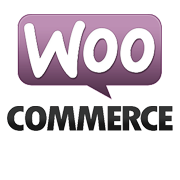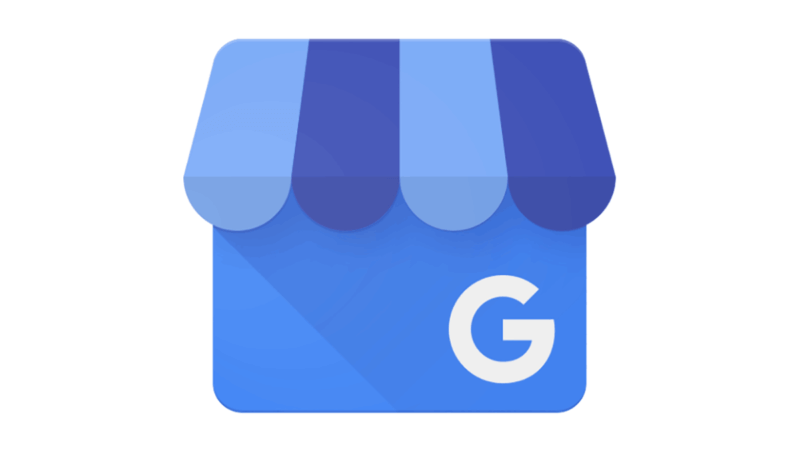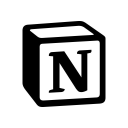How We Scaled Our Agency From 0 To $2M/Year In Under 2 Years With Our Content-Focused SEO Services
Hello! Who are you and what business did you start?
My name is David Riggs, and my business is Pneuma Media. Pneuma Media is a website design, development, and SEO Agency. We scaled from $0 - $2M in under 2 years.
Essentially, we do all things “website”, which is a really exciting thing to own for many of our clients. Our main product is SEO - our approach is a tad different from others, we believe that content is the main way to grow SEO campaigns, so we also take our “SEO Content” and redistribute it to other platforms.
I started Pneuma a few years ago moonlighting my then-current job. In many ways, my current job at that time was a big advantage for me, especially as I was trying to grow a business.
Essentially, I was a management consultant - a lot of my day-to-day work was around business planning, financial planning, and go-to-market / product marketing iterations. It was a great way to fine-tune my skills, on someone else’s dime. At that point, I was just working enough to build a business that could sustain me going full-time.
2 years later, we have over 20 people full-time in the business.

What's your backstory and how did you come up with the idea?
My journey is a bit interesting. My whole life, I wanted to be in finance. Like, all in on finance. Anything that felt like “wall street” was interesting to me. Looking back, I have no idea where my obsession with finance came from, other than the fact I was told that I was good “with numbers” growing up.
Things started to take a turn after I interned as a Junior in college at Eli Lilly and Company on their Corporate Finance team. It was the first time I realized that God, or life in general, was pointing me in a new direction. I worked incredibly hard to get the internship but also worked incredibly hard AT the internship to impress. When it came time to receive my job offer, I was declined, and was told “I didn’t work very hard” and “I lacked focus”.
Although that was THEIR feedback, qualitatively, I didn’t feel the same way. I took that internship as a “lessons learned” experience and immediately started to invest more time into my own company, Pneuma. At the time, I simply wanted to put some of my “energy” into something that I could own. I felt so let down, and frankly taken advantage of, at Eli Lilly, that I wanted to build something that I knew I could own the inputs AND outputs of.
Pneuma started simply to keep me busy but quickly turned into something with a dedication to solving real problems for businesses. We started with a very basic social media management service, something that I could quickly sell to real businesses, and build a brand/business off of.
The businesses I see perform the best over the long haul are the ones that start slow and scale big, after taking small, measurable steps to meet their definition of success.
However, after working with a few clients, I realized that their largest issue was always their website. Whether it wasn’t converting well, it was impossible to update, or it just didn’t tell its story properly, I realized that the world of website design and development was the place to hang my hat moving forward.
At that point, it almost feels like the rest is history so to speak. We’ve taken that same approach and applied it to hundreds of companies across the globe, working with them to turn their website into a working asset for their business. We even used that same messaging to work with a Mark Cuban Company, which further confirmed the idea that we were on to something.
Take us through the process of building the first version of your product.
Almost every “service” at Pneuma is built on the back of the knowledge I learned from a book called Lean Thinking. The simple premise is, less is more, and “value” can be derived in a process by doing less, and banishing “waste”.
The process we had to build websites and run SEO campaigns when we started Pneuma is, ironically, very very similar to the process we have today. However, the small learnings along the way have created a process that seems bulletproof at times.
One of the ways we keep an interactive approach to our processes is with meetings called “Autopsies”. While the name might be funny to some, the process and goal of the meeting are quite simple. Every month, we review each project one by one, on both the web and SEO teams, and determine if it’s going great, well, or not so great. We then use those learnings and slowly pivot our product to something that further helps our clients.
Sometimes, those meetings result in LARGE changes, like switching software or meeting cadence. Other times, those meetings result in SMALL changes, like adding a slide to our kickoff deck or reviewing the templated message we send out to start the project.
Whatever those changes are, we’ve used this process since Day 1 to further our products, and create something that is more in line with the customer’s expectations, and the customer’s success metrics.
Describe the process of launching the business.
When asked about launching Pneuma, I almost chuckle, because our “launch” wasn’t much of a launch at all. It felt a lot like a rolling start or even a walking start.
I was young at the time and had no formal business experience. I couldn’t think of a big, grand marketing launch, so I decided to just “launch” one Friday night, and begin to work and accept clients. Ironically, I don’t think I’d ever take that approach again.
While it worked, and Pneuma is where it is today off the back of a subpar, slow-burn launch, I think capturing as much attention from day one is never a bad idea. There are pros and cons to both, but as I’ve started new businesses since Pneuma, I’ve found that a more formalized (and truthfully, loud) launch strategy seems to work the best.
If I remember correctly, I got my bank accounts, credit card, website, and payment processor set up all in one night, and we were off to the races.
For my bank account, I used Chase. There wasn’t much of a decision by this choice, other than Chase is where all of my other accounts were. However, I always recommend Chase to any new business owner today. There are plenty of “digital banks” like Mercury and Relay that might move a little quicker, but I’ve found Chase’s team/tools to be far more useful than anything else.
For our credit cards, I used American Express. I opened up a personal American Express Gold Card and ran all the business expenses through it. It not only helped me build some credit/credit history, it was a great card to run everything through in terms of business expenses, but still gave me a few perks I would need later.
As far as our website goes, our V1 was on Wix. I built it in a night. However, a few months later, I took more time and moved the site over to Webflow, which is its home as of today.
Wix was great, but I found Webflow to be far more advantageous for what we needed. Equally, a lot of our prospects asked specifically for Webflow builds, so it was a great advantage to showcase that our website was on Webflow as well.
For our payment processor, I first used Paypal and then switched over to Stripe. The switchover was a bit complex, as some clients were on Paypal, and some were on Stripe. However, over time, switching was well worth it, as Stripe has far more advanced functionality than PayPal.
From setting up subscriptions for our SEO clients to integrating them with our signature/contract solution (PandaDoc). I always recommend Stripe to any new business owner, as it’s been a core reason I believe we’ve grown so quickly while being bootstrapped.
One of the things I did with Pneuma (realistically, not even by choice) was to bootstrap the company. I was broke, in college, and barely had enough money, to begin with. Even if I wanted to finance the company more creatively, like SBA7 or something of the sort, I would’ve never applied.
I think this kept me very honest as I started out, and ensured that my decisions were pointed, specific, and thought out. While it made the business move “slow”, it ensured that no money was wasted and that I had true conviction in the moves I was making.
It also meant that I had to “hunt” for my first clients. I didn’t have the money at the team to even run $50 worth of ads, so I focused purely on cold outbound and networking to get my first client.
Luckily, my campus was filled with all sorts of networking events with alumni, and opportunities to get in front of individuals I thought would be the right fit. After a few months of just meeting new people, connecting with them on LinkedIn, following up, etc., our first two clients came in the same week: A public speaker looking for a portfolio website, and a coworking spot looking for a website overhaul.
Ever since then, we’ve used that momentum to continually close new clients. While it isn’t the “sexiest” advice out there on how to land clients, it’s a skill set that always works, and one that I still use today to land some of our largest contracts and clients.
While I have much more money at my disposal now, I loved those times at Pneuma because every decision felt a little like life or death, and it required such a high level of focus to find success over time.
Since launch, what has worked to attract and retain customers?
As far as attracting clients goes, there are three main strategies we rely on. Content Marketing, Outbound Sales, and Partnerships. Here’s how we break each of those down, and how we manage our strategies for each channel.
In terms of Content Marketing, this is our true bread and butter. We are, at heart, an SEO firm, so the content comes naturally to us. We see content marketing as an “action”, and are fully focused on taking one single piece of content and turning it into micro pieces of content.
Typically, the process starts with a long-form piece of content, say a longer blog, podcast, etc., and then it turns into smaller content pieces distributed to Twitter, LinkedIn, Instagram, etc. We find this strategy is simple but straightforward, and easy to scale.
In terms of Outbound Sales, we specifically focus on cold emails and cold outbound on LinkedIn. While they might not be the most “favored” ways to generate leads by others, we find them to be both predictable and helpful, in growing our business and putting our products into the hands of businesses who need them.
We utilize Instantly and Google domains, a fairly simple and straightforward tech stack to build out our campaigns. It will likely never be our #1 lead source, but I expect it to be in our top 3 for the foreseeable future.
In terms of partnerships, this is one of our top 3 channels for generating leads, and one that I believe will only continue to grow. In short, we set up formal partnerships with our clients via an agreed-upon referral rate. I think the secret sauce of this strategy is the formality of it - instead of just random handshake deals, we utilize a formalized contract that makes things feel a bit more “professional”.
Our partnership strategy is to work with adjacent, non-competitive businesses, or our DIRECT competitors. Many of our direct competitors have been great partners when a deal is either too big or too small.
In terms of retaining customers, we believe that it all comes down to two big bucks. Reporting, and communication.
In terms of reporting, we created a custom, automated data studio report that syncs data from multiple sources. This keeps our reporting up to date 24/7 and gives clients a great viewport of our workload.
In terms of communication, we believe in 3 forms of communication. Asynchronous Slack Messages that keep the client up to date. These tend to be tactical, short, and to the point, but keep clients “at bay” (in a nice way) and remind them that we are actively working in their favor. The second form of communication is monthly meetings. These are focused, 30 min meetings, that are set up to drive “the next month’s worth of work” rather than review the prior month’s work. This keeps us on top of our workload, and ahead of the curve in terms of strategy. The final form of communication is called the QBR - Quarterly Business Review. We use this meeting to drive our quarterly strategy. It’s a lot like a monthly meeting, but 45 mins long, and a bit more “formal” to remind the clients of our capabilities.
Data Studio Report:

Snapshot of QBR:

How are you doing today and what does the future look like?
Today, we are honing in on our operations to better understand the core drivers of our business. We like to get things down to “unit level metrics”, so we like to know the capacity of each project manager per client, the capacity of our sales team in terms of the number of leads we have, etc. We use these metrics and numbers to not only determine efficiency but to also determine when we need to hire
Our long-term goal for the business is to build a $10M agency. While we might not ever “sell” the agency, the general goal is to grow the agency to $10M, while making customer success and reporting the thing that makes us “different”.
Through starting the business, have you learned anything particularly helpful or advantageous?
While I could have a very, very long list on this, I think the most important thing I’ve learned while starting Pneuma was how business finances work. From the basics, like credit cards and bank accounts, to the more complex, like lines of credit and buying other businesses.
Money tends to be a somewhat taboo thing to talk about, especially outside of business environments, so having Pneuma to further learn about finances, how they truly work, and how to use it to Pneuma’s advantage has been more than helpful.
What platform/tools do you use for your business?
We use a fairly lean tech stack.
Stripe, for billing and payments
Slack, for communications
Gmail, for the occasional email
PandaDoc, for contracts
Notion, for documentation
Pastel, for feedback on client websites
Semrush, for SEO tracking
Todoist, for task tracking
Airtable, for project management
Chase, for banking
American Express, for credit cards
Webflow / WordPress, for website
The list above, while fairly small in comparison to other agencies, are all tools that are easily accessible, easily automated, and fairly “cheap” in the grand scheme of things.
What have been the most influential books, podcasts, or other resources?
Personalmba.com and the Bible.
While it’s an extremely short list, those two books have been instrumental in helping me build a business.
Personal MBA is a great, easy-to-reference book to learn more about the tactical parts of running a business
The Bible, even if you aren’t faith-based, provides some of the best business and management advice. Proverbs has been a book I reference time and time again regarding leadership, decision-making, and managing others.
Advice for other entrepreneurs who want to get started or are just starting out?
Hidden up above is my “launch story”. A large part of Pneuma’s launch was that it wasn’t very “loud”, it just happened.
The advice I’d give others is to just take the smallest, measurable step and get the ball rolling. In today’s world, “loud” and “flash” get the most attention, but that isn’t always a great sign of a strong, healthy business.
The businesses I see perform the best over the long haul are the ones that start slow and scale big, after taking small, measurable steps to meet their definition of success.
I also think a large part of running a small business actually comes down to the founder’s personal life - what’s going well, what’s not going well, what they do and don’t struggle with, etc. An easy example of this is when a founder might have a “negative” money mindset - that can QUICKLY hinder the business and its growth.
In many ways, the founder’s strengths and weaknesses are directly related to the company’s DNA - knowing that, and being able to cater to it, can put a business at a strong advantage over the long haul.
Where can we go to learn more?
If you have any questions or comments, drop a comment below!

Download the report and join our email newsletter packed with business ideas and money-making opportunities, backed by real-life case studies.

Download the report and join our email newsletter packed with business ideas and money-making opportunities, backed by real-life case studies.

Download the report and join our email newsletter packed with business ideas and money-making opportunities, backed by real-life case studies.

Download the report and join our email newsletter packed with business ideas and money-making opportunities, backed by real-life case studies.

Download the report and join our email newsletter packed with business ideas and money-making opportunities, backed by real-life case studies.

Download the report and join our email newsletter packed with business ideas and money-making opportunities, backed by real-life case studies.

Download the report and join our email newsletter packed with business ideas and money-making opportunities, backed by real-life case studies.

Download the report and join our email newsletter packed with business ideas and money-making opportunities, backed by real-life case studies.















































